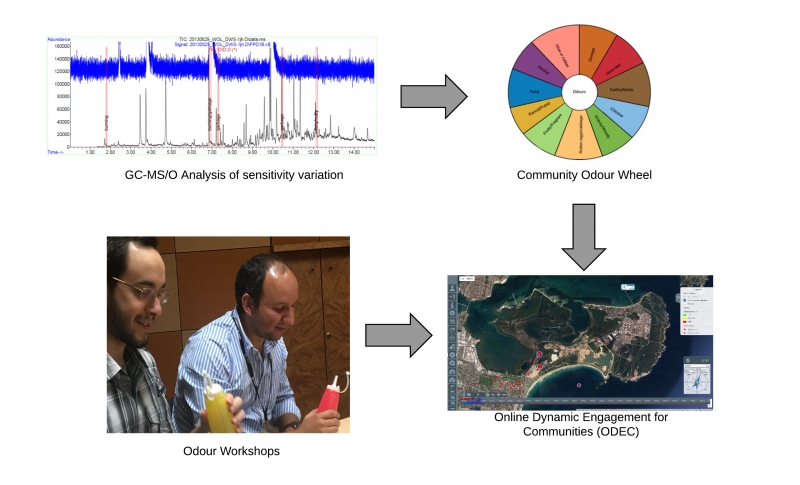Unrepresented community odour impact: Improving engagement strategies
In the recently published paper entitled “Unrepresented community odour impact: improving engagement strategies” the authors investigated the variation of response between panellists of high and average olfactory sensitivity using Gas Chromatography-Mass Spectrometry/Olfactometry (GC-MS/O).
 This information elucidated how current GC-MS/O methodologies, that only use panellists of average sensitivity, do not fully represent odour impacts as experienced by members of the community. Based on these results, the authors presented a Biosolids Processing Odour Wheel followed by a Community Odour Wheel for use by untrained community members and site operators. By using the information gathered from this research, as well as odour testing workshops for a wastewater treatment plant’s staff and community surrounding the facility, the authors established a communicative system, which was subsequently incorporated into an online dynamic odour observation platform. This platform provides a NSW-based wastewater treatment plant with meaningful information from the community, as well as a common language for which to discuss environmental malodour with all stakeholders.
This information elucidated how current GC-MS/O methodologies, that only use panellists of average sensitivity, do not fully represent odour impacts as experienced by members of the community. Based on these results, the authors presented a Biosolids Processing Odour Wheel followed by a Community Odour Wheel for use by untrained community members and site operators. By using the information gathered from this research, as well as odour testing workshops for a wastewater treatment plant’s staff and community surrounding the facility, the authors established a communicative system, which was subsequently incorporated into an online dynamic odour observation platform. This platform provides a NSW-based wastewater treatment plant with meaningful information from the community, as well as a common language for which to discuss environmental malodour with all stakeholders.




